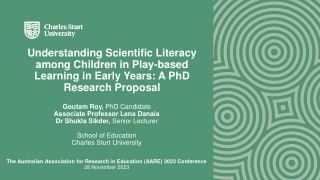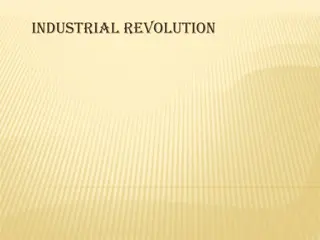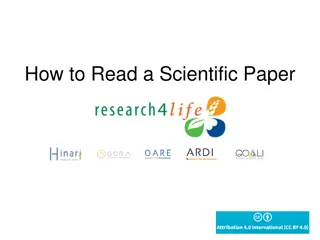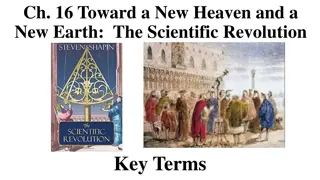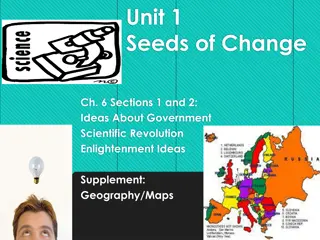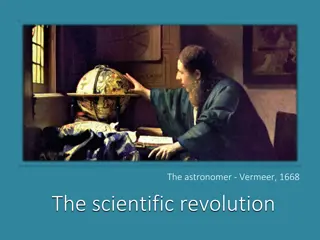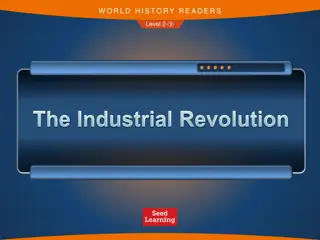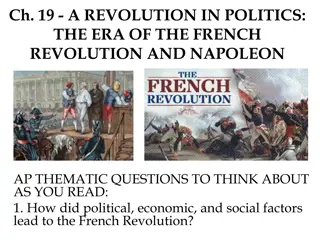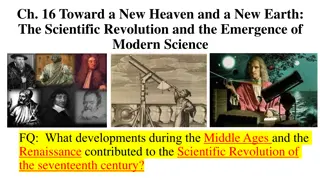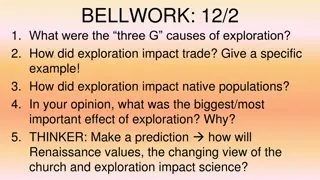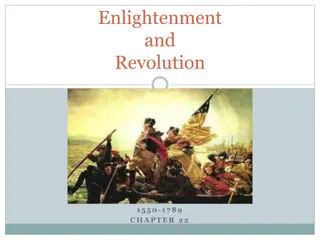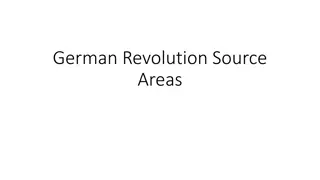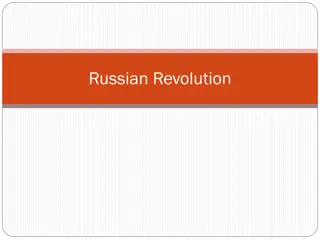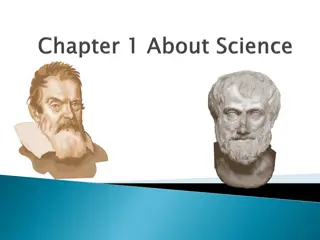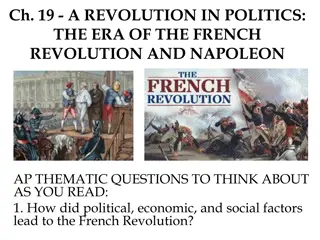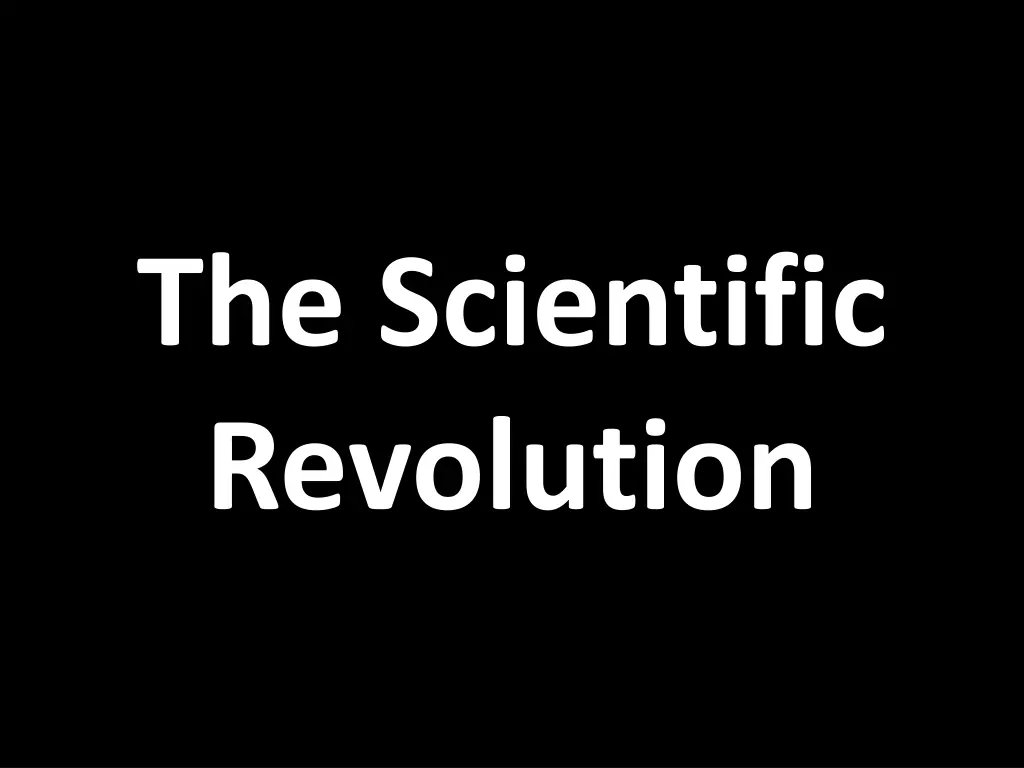
Key Figures of the Scientific Revolution
Explore the transformative period of the Scientific Revolution with key figures such as Copernicus, Brahe, Kepler, and Galileo challenging traditional beliefs about the structure of the universe, leading to groundbreaking discoveries in astronomy and physics.
Download Presentation

Please find below an Image/Link to download the presentation.
The content on the website is provided AS IS for your information and personal use only. It may not be sold, licensed, or shared on other websites without obtaining consent from the author. If you encounter any issues during the download, it is possible that the publisher has removed the file from their server.
You are allowed to download the files provided on this website for personal or commercial use, subject to the condition that they are used lawfully. All files are the property of their respective owners.
The content on the website is provided AS IS for your information and personal use only. It may not be sold, licensed, or shared on other websites without obtaining consent from the author.
E N D
Presentation Transcript
The Scientific Revolution
Ptolemaic View of the Universe For centuries, Europeans believed that the Earth was at the center of God s universe and that the heavenly bodies orbited the Earth in perfect circles (the Heavenly Spheres ) This geocentric (Earth- centered) model had been put forth by the Roman scientist Ptolemy in the 2ndcentury AD
Nicolaus Copernicus 1473 1543 Catholic Polish astronomer His observations led him to challenge the geocentric model and propose a heliocentric (sun- centered) model Also argued that the Earth revolved on an axis and took 365 days to orbit the sun Published On the Revolutions of the Celestial Spheres (1543) in the same year that he died His work was attacked by Luther & other Protestants, but not by the Catholic Church
Tycho Brahe 1546 1601 Wealthy Danish nobleman Built a personal observatory and charted 20+ years worth of careful records on celestial motions Lost his nose in a duel, so he wore false metal ones Hired a young assistant named Johannes Kepler to help record data
Johannes Kepler 1571 1630 German astronomer & teacher Used Brahe's data to argue 3 laws of planetary motion: orbits of planets are elliptical; planets speed up as they get closer to sun; planets with larger orbits revolve slower than those with smaller orbits Improved the telescope Faced persecution and ridicule due to his Calvinist faith
Galileo Galelei 1564 1642 Italian scientist Proved that the Earth revolves around the sun in his work, The Starry Messenger (1610) Catholic Church condemned Galileo's work argued he should focus "not how the heavens go, but how to go to heaven" Galileo again upset the Church by continuing to argue heliocentrics in Dialogue on the Two Chief World Systems: Ptolemaic and Copernican (1632) In 1633, facing the Inquisition, Galileo recanted his findings and was placed under house arrest until his death Continued to work, even under house arrest, on "mechanics" (inertia, acceleration)
Heliocentric Theory Despite the Church s protests, Galileo was too well respected as a scientist to be ignored and Europe s educated elite quickly adopted his heliocentric model for the universe It s worth noting, however, that Galileo and his predecessors were still WRONG the Sun is not the center of the universe
Sir Francis Bacon 1561 1626 English nobleman and former Lord Chancellor of England who was forced out of politics due to numerous scandals Became a scientist, but discovered that there was no standard system for approaching experimentation Began to develop a scientific method for conducting empirical (observation- based) research Believed that science should serve and empower man, be practical, help man conquer nature Many unanswered questions about Bacon: Was he Elizabeth I s secret son? Was he the real author of Shakespeare s plays? Was he a homosexual?
Rene Descartes 1596 1650 French philosopher and mathematician; father of modern rationalism (thought-based, or deductive, research) Cogito ergo sum (I think, therefore I am) - Descartes only believed in things that his mind could accept as true Cartesian dualism the mind is immaterial and completely separate from the material body Also developed the Cartesian plane and Cartesian coordinate system, critical to the development of higher math such as calculus
Sir Isaac Newton 1642 - 1727 English scientist, devout Christian Wrote Principia Mathematica (1686) in which he explained his three laws of motion: an object in motion tends to stay in motion unless affected by an outside force; change in motion is proportional to force; for every action, there is an equal and opposite reaction Newton used these laws to explain gravity - a universal force that describes all motion in the universe In order to mathematically explain motion and gravity, Newton created the new field of calculus
Sir Isaac Newton Newton also discovered the composition of light and made major improvements to the telescope Newton saw his discoveries as reinforcing the existence of God, because only a Supreme Creator could have set such physical laws in motion Still, even Newton wasn t perfect he wasted much of his time studying alchemy, magic, astrology, and apocryphal writings
Scientific Method Bacon's empiricism (observational experimentation) + Descartes rationalism (deductive reasoning) + Newton's practical application of each = The Scientific Method
Robert Boyle 1627 1691 Irish chemist Boyle s Law: When temperature is held constant, pressure is inversely related to volume in gases Advanced the idea that matter is made up of atoms
Antoine Lavoisier 1743 1794 French nobleman and chemist Developed the first system for identifying and naming chemical elements Created the metric system of measurements Executed during the French Revolution
Paracelsus Actual name: Philippus Aureolus Theophrastus Bombastus von Hohenheim 1493 1541 Swiss doctor Determined that disease is caused by chemical imbalances in specific organs and can be countered with carefully dosed chemical remedies Argued that often like cures like (ex. fight fever by keeping the patient warm) First to diagnosis specific illnesses and prescribe specialized treatments
Andreas Vesalius 1514 1564 French doctor Wrote On the Fabric of the Human Body (1543), an advanced study of human anatomy; Vesalius dissected the corpses of executed criminals and used professional artists to illustrate his book Became the imperial physician to both Charles V and his son Philip II of Spain Despite the new knowledge he had gained, Vesalius still held to many ancient medical practices, such as bloodletting, to sure illnesses
William Harvey 1578 1657 English doctor Wrote On the Motion of the Heart and Blood (1628) Discovered that it is the heart, not the liver, which is the vital force in blood flow; also determined how blood flows through veins and arteries Personal physician to Kings James I and Charles I, as well as Francis Bacon
Benedict de Spinoza 1632 1677 Dutch Jew, but excommunicated by the Judaic church Argued that God is nature and therefore everything is subject to natural laws This means everything has a rational explanation which can be discovered and understood Believed science had no limits
Blaise Pascal 1623 1662 French mathematician, scientist, and religious philosopher Pointed out the limits of science Argued that humans are deceived by their senses (so no empiricism), misled by reason (so no rationalism), and are controlled by their emotions We can never prove or disprove the existence of God we can t see God, we can t rationalize God so we must rely on faith God is a reasonable bet; it is worthwhile to assume God exists. If He does, then we all win; if he does not, we lose nothing.

